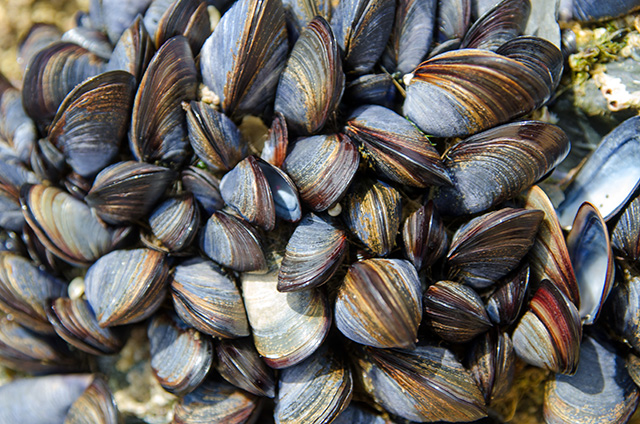San Francisco Bay shellfish found to be contaminated with four different types of toxins
04/12/2018 / By Janine Acero

An alarming number of different toxins was found in mussels collected from the San Francisco Bay, reported a Science Daily article. A research team determined four different kinds of toxins, including one located in freshwater environments, in a study published in the journal Harmful Algae.
The team found that the San Francisco Bay now houses a concoction of multiple toxins found in both fresh and marine water. This raises concerns as to its impact on the organisms living in the affected waters, as well as the serious health implications on both wildlife and humans who consume shellfish contaminated with the toxins.
The study reported that 99 percent of mussels collected from the bay were contaminated with at least one algal toxin, and 37 percent contained four distinct classes of toxins. The researchers found that the contamination levels far exceeded regulatory guidelines for multiple toxins found in shellfish.
The study spanned a period of severe drought (2012 to 2016), with record high temperatures and salinity in water, and record low flows. The researchers posited that this might have increased the intensity of the harmful algal blooms.
State officials have routinely monitored shellfish on the open coast, but according to senior author Raphael Kudela, the Lynn Professor of Ocean Health at the University of California, Santa Cruz, the toxins and the level of contamination in shellfish from San Francisco Bay may be very different from what’s found on the open coast.
Consumption of any food that’s contaminated with toxic substances can have serious health effects, and this is especially true for contaminated shellfish, which provide food for humans and marine species alike. However, the research team found that people harvest mussels from the San Francisco Bay for personal consumption despite having no commercial shellfish operations in that area.

“At first we thought no one eats shellfish out of San Francisco Bay, but in fact you can go online and find blogs talking about the best places to collect mussels, and some of those are the places where we found the highest toxin levels,” Kudela said.
Toxic mussels
Mussels in the bay were contaminated with the following toxins:
- Domoic acid – A neurotoxin produced by marine planktonic diatoms in the genus Pseudo-nitzschia. This toxin causes amnesic shellfish poisoning in humans.
- Saxitoxin – This potent neurotoxin causes paralytic shellfish poisoning and is produced by marine dinoflagellates in the genus Alexandrium.
- Okadaic acid and derivatives – Marine dinoflagellates in the genus Dinophysis produce these toxins, which cause diarrhetic shellfish poisoning.
- Microcystins – These hepatotoxins are the only ones found in the San Francisco Bay that are produced by freshwater cyanobacteria in the genus Microcystis, which cause liver damage in people and animals.
The mussel samples for both microcystins and Dinophysis shellfish toxins were found to exceed recommended guidelines for human consumption, while levels of domoic acid and saxitoxins were lower than the regulatory limits. Kudela noted that prolonged and repeated exposure to even low levels of these toxins may still cause neurological impairments. He added that the data on toxin levels may have been inaccurate, as this is a “fairly small study” and that there may be “bigger peaks” than the levels they observed.
The study was the first to report findings on both freshwater and marine toxins in the same mussel samples, particularly the four identified toxins.
Kudela works closely with state and federal agencies, which are now considering changes to their monitoring programs after the research findings caught their attention, particularly the evidence of widespread contamination by freshwater microcystins.
Biological toxins are not the only ones that cause catastrophic damage to aquatic ecosystems all over the world. Man-made toxins have found their way into bodies of water, disrupting ecological balance and causing overall harm to the environment. Visit Environ.news to know more.
Sources include:
Submit a correction >>
Tagged Under:
This article may contain statements that reflect the opinion of the author





















